Safety
Many
bottlers were injured by exploding
Charles Sulz addressed the topic of safety in his 1888
book, A Treatise on
Beverages or The Complete Practical Bottler, with the
following comments and illustrations:
For the safety of the operator, to protect him against
injury from the glass fragments of bursting bottles, safety screens are
attached to the bottling machines as seen in the illustrations.
Instead of them, or even besides, wire bottle-screens are used,
especially where beverages under high pressure in pint or quart bottles
are to be filled, and their employment affords greater safety or
protection. These bottle
screens are made of steel wire, well tinned, and are strong and durable.
Other appliances for protection and safety for face and eye are
wire masks and wire eye protectors; for hands ‘bottling gloves’ are
used. When a moderate and
standard pressure is maintained for ordinary bottling the safety screens
attached to the bottling machines afford all the protection that is
necessary; for bottling highly charged beverages in large-sized bottles,
it is well to care for additional protection by employing the other
appliances.
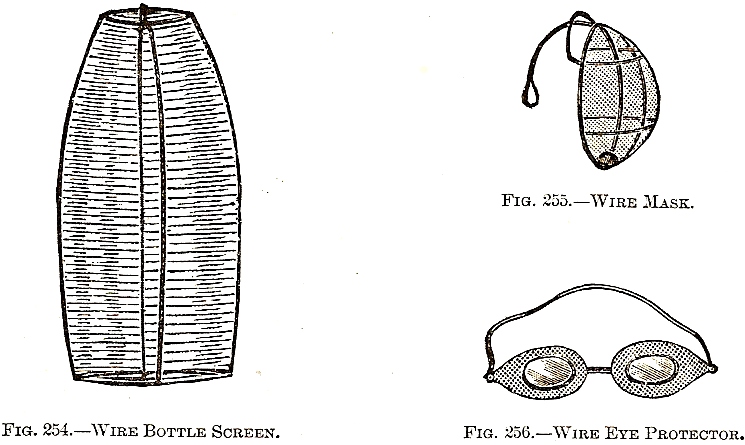
Bottling
Pressure. – The usual pressure to bottle at should not exceed 60 to 80
lbs. for saccharine beverages.
Plain soda waters are frequently bottled at from 80 to 100 lbs.,
siphons at from 120 to 140 lbs. of pressure.
Carbonated beverages going to hot climates should not be charged
higher than 30 to 45 lbs.; but the liquid must be
thoroughly agitated to
impregnate it with gas.
No greater mistake is made by bottlers than when they attempt to
charge their beverages with excessive high pressure…
Complaints of bursting of bottles are frequent.
This is due to overcharged or badly annealed or cracked bottles,
and they burst nearly always in the process of bottling, as it is at
that moment that the greatest pressure is inflicted upon them.
The exploding of bottles afterwards is partly due to the same
cause, but also to changes in temperature and rough treatment while on
transportation and other similar causes.
Accidents not infrequently happen, and such of a most painful
character are known, and the carbonator can guard against them by
properly charging and bottling his beverages.
Testing Carbonated Beverages…A requisite for bottling
is a test gauge. This is an
instrument for ascertaining the pressure of gas in the bottles filled
with carbonated waters…Fig. 258 is a device for being attached to
the…pressure gauge and used when testing the pressure in
patent bottles.
The under part of the tongs is shaped like a fork: this is placed
under the ring or neck of the bottle, when, by compressing the handle,
the plug on upper part will be brought on to the top of the stopper in
the bottle, and so force it away from its seat the pressure can now be
noted, and by reversing the bottle the tongs can be taken off, the
stopper will take its seat, and the bottle be again closed.
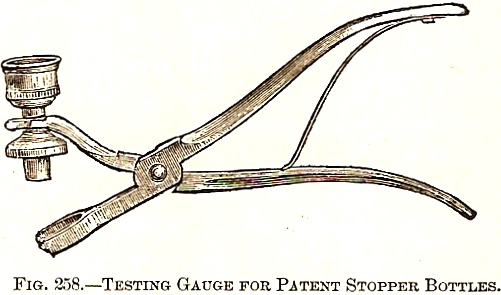
Early
industry trade publications contained numerous references to mishaps
involving bottlers. Here’s
an example from the December 15, 1897 issue of
The Western Bottler:
S. F. Ellingwood demands that the Omaha Bottling
Company pay him $5,000 for an eye he lost while in the employ of the
defendant. Ellingwood
alleges that he was employed by the defendant, laboring as a soda water
bottle filler. While so
engaged, he alleges, on September 6th last, a bottle exploded
and that fragments of the glass flew into his eye, destroying the sight
of the organ. He further
alleges that the machinery in the factory was defective, as was the
bottle, and that consequently the defendant is responsible for the
accident.
W. H. Hutchinson & Son supplied numerous safety-related products specifically designed to provide additional protection for bottlers. Here are examples of several items advertised in their 1908 Bottler's Book:
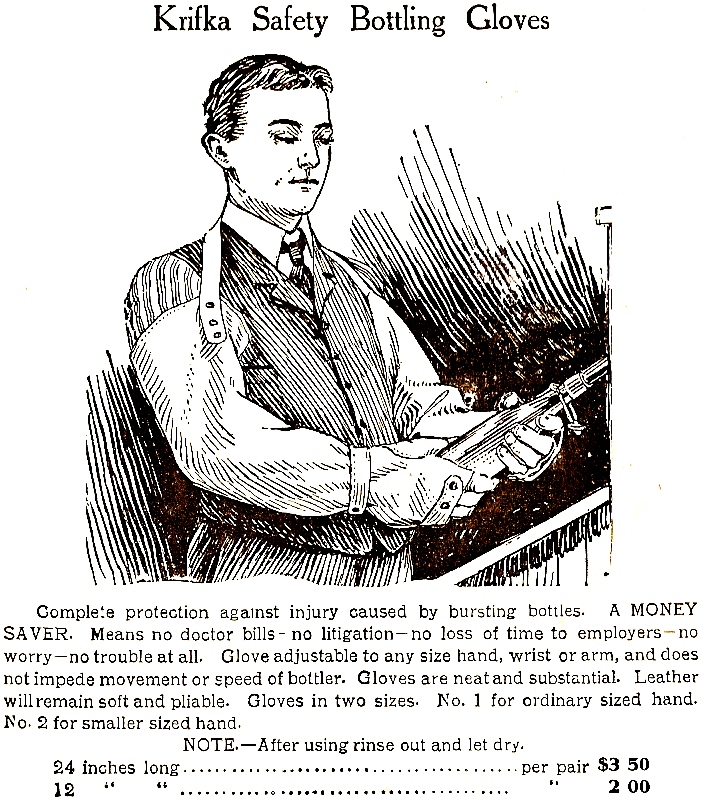
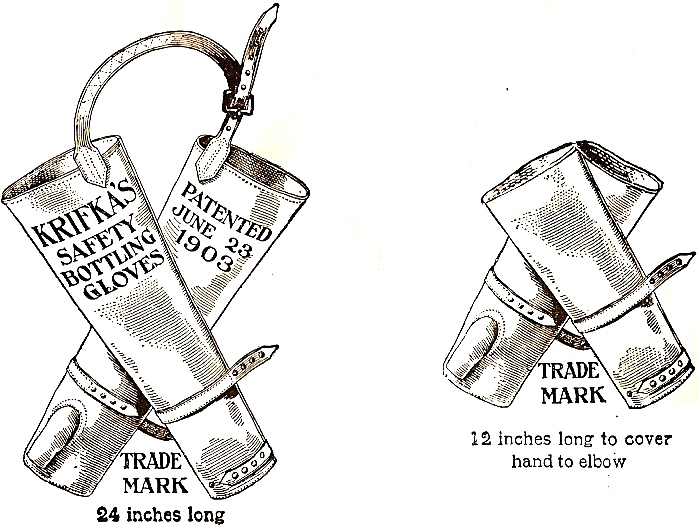
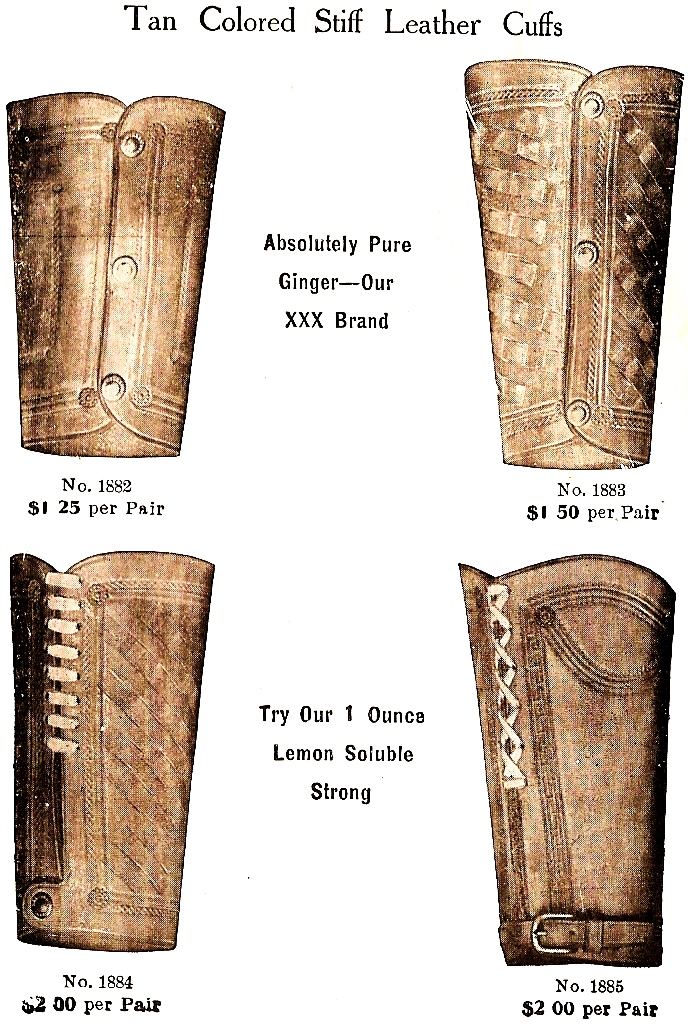
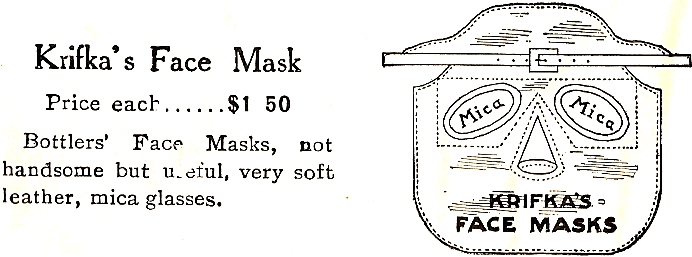
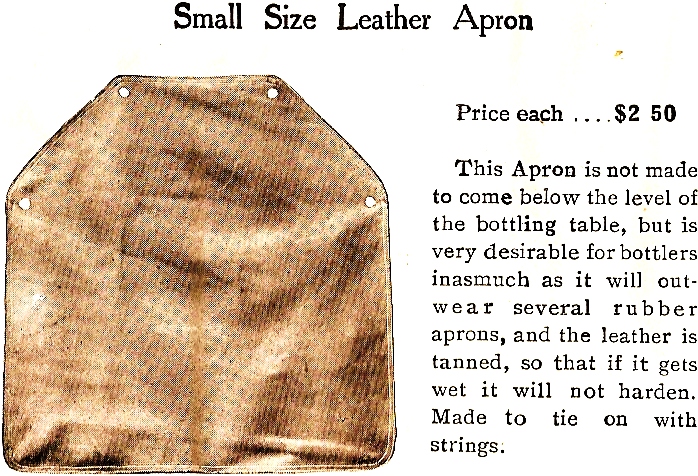
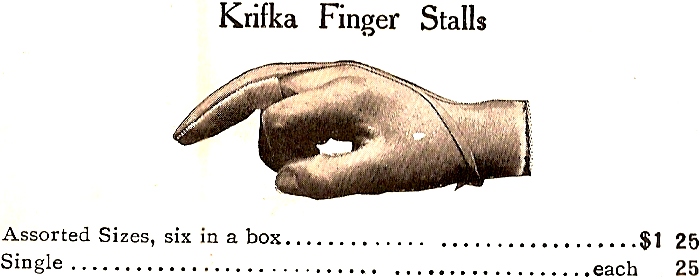
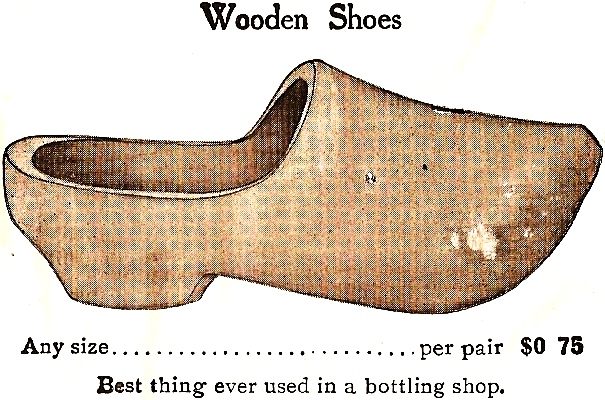
Most of the bottling industry
supply houses offered face masks during the
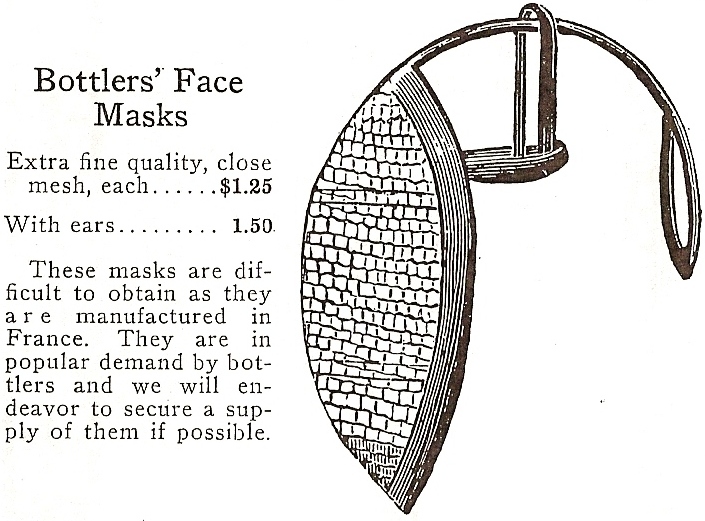
These
BODY PROTECTOR.
By Wm. Stier, Jr.,
A screen for
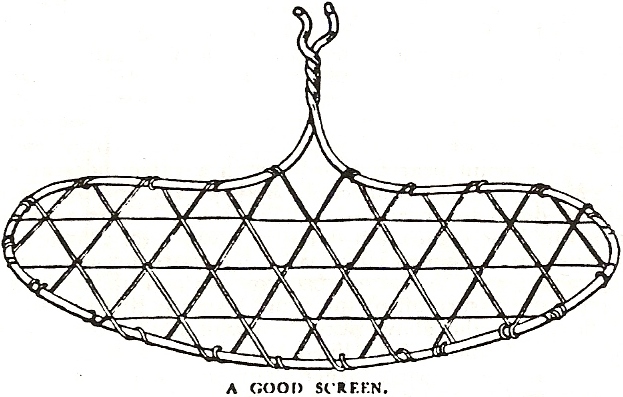
BOTTLING GLOVES.
By Mrs. M. Kaufman,
To prevent cuts in bottling take an ordinary pair
of woolen gloves and cover outside with five or six sheets or
cotton. A piece of
cloth or fine leather is then placed over this cotton.
This makes a good bottling glove, being far superior to the
rubber glove, which allows water to run up the arms.
This glove absorbs the water.
DRY FLOORS.
By Davison & Welch,
To keep from getting wet when bottling with the
 HutchBook.com
HutchBook.com